AUGUSTA (Day 2 - part 2)
This room now contains the Hall of Flags. Originally the flags were just from the Civil War, brought in by returning soldiers. Later, donations came in from the Spanish-American War, WWI, WWII and the Korean Conflict.
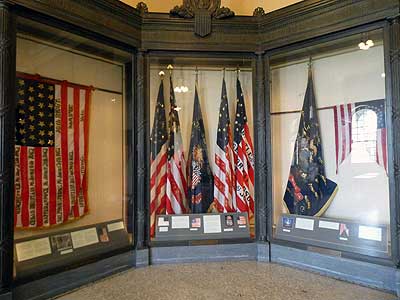
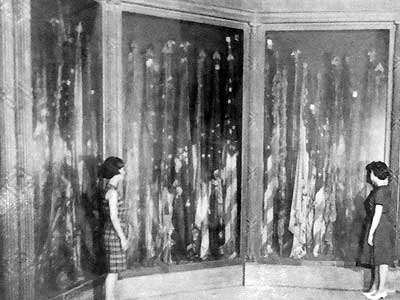
In 1911, the flags cases were considered to “air tight” but weren't really. They didn’t have the technology back then to actually prevent decay. Also people used to cut pieces off as souvenirs. So they were moved to a museum next door and these are all replicas. They look like silk but aren't.
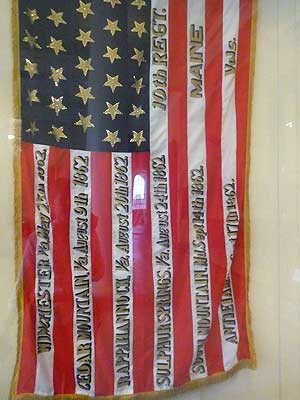
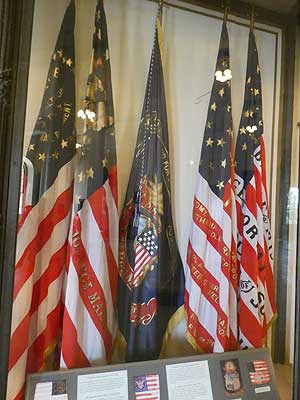
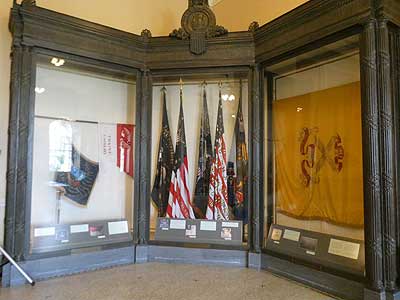
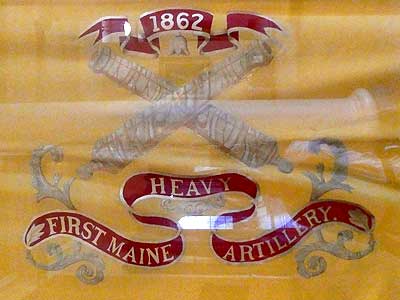
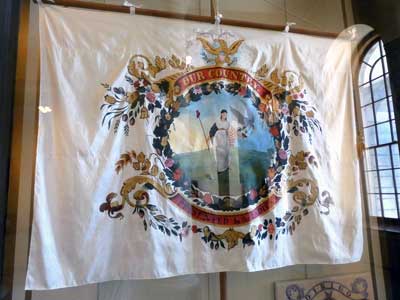
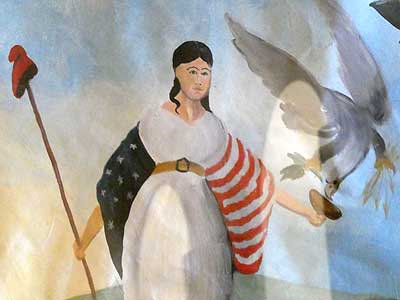
1825 flag of Lady Liberty
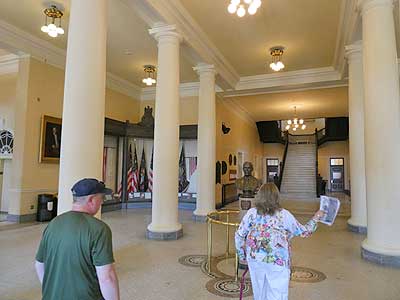
Continuing the tour
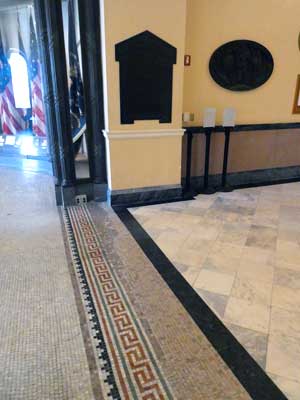
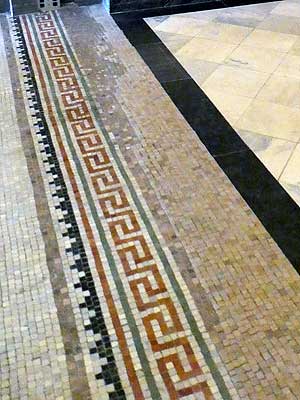
These tiles represent the end of the original building, before is was expanded by the back west wing.
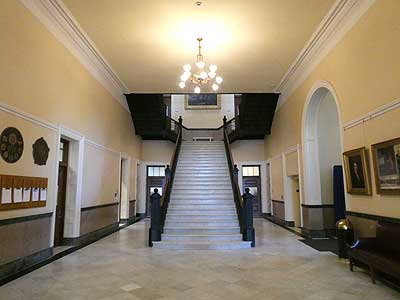
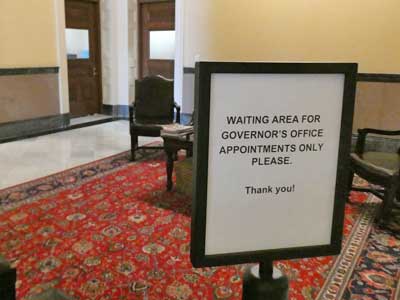
The grand staircase ... The second floor also houses the offices of the Governor.
We took the elevator up because Crystal was still recovering from a knee surgery. The floors used to have very tall ceilings so they were split into half floors.
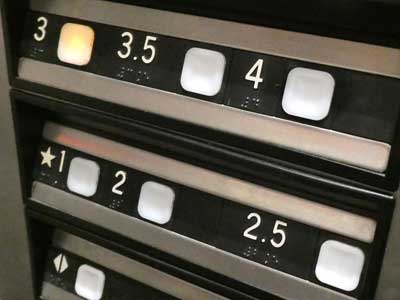
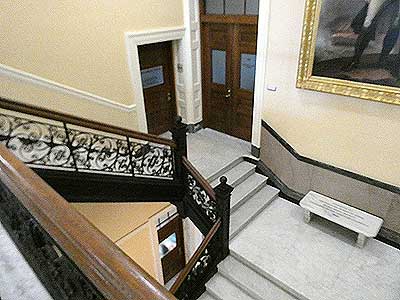
Going up to the third floor ... looking down at the 2.5 floor
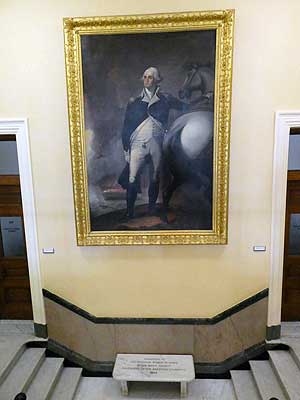
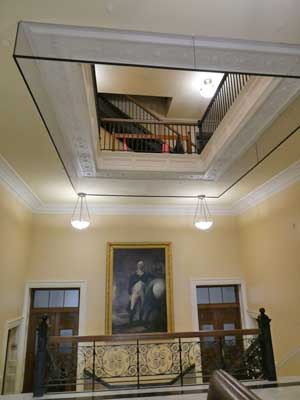
The portrait of George Washington was painted in 1836 by Thomas Truman Spear. ... Looking up at the 3.5 floor
Exploring the third floor...
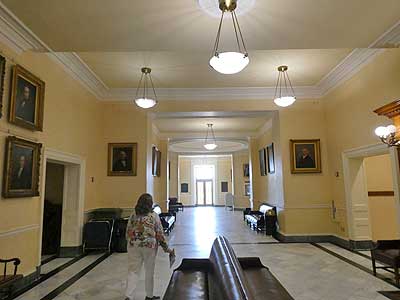
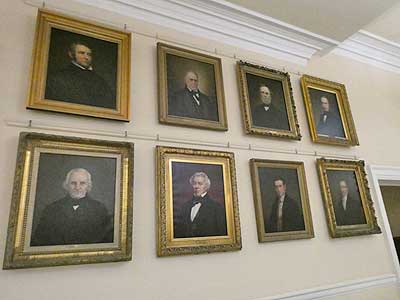
The portraits of various governors are rotated to different positions on the wall.
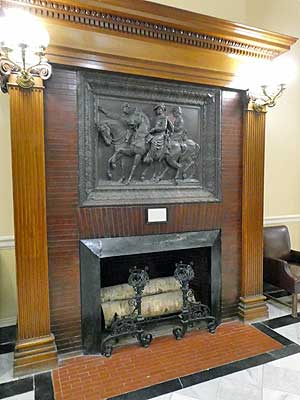
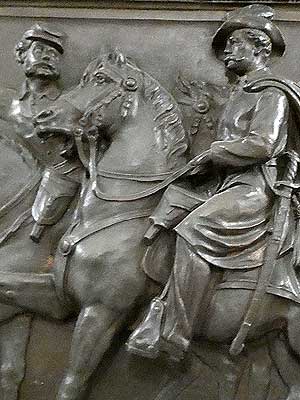
The west wing fireplace was once used to heat the place. The terra cotta bas-relief is a copy of a piece of a frieze on the Pension Building in Washington DC. It represents the return of volunteers from the Civil War.
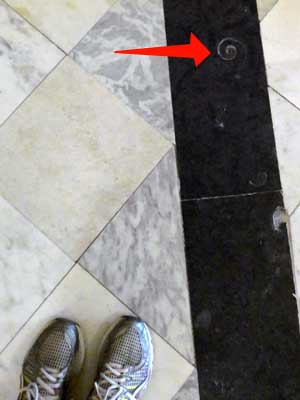
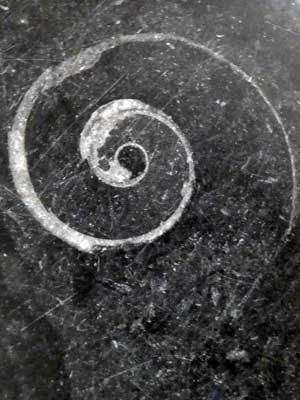
The black limestone strip contains 500-million-year-old fossils.This comes from a mine in Vermont. The white marble comes from Italy.
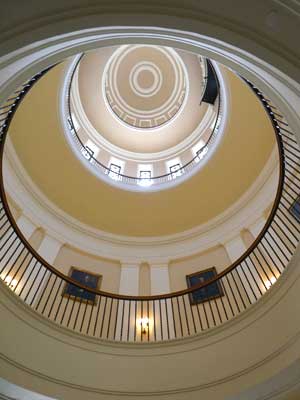
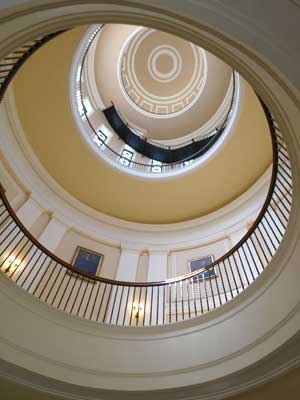
In the center of the hallways, one can look up at the fourth floor and dome in the cupola.
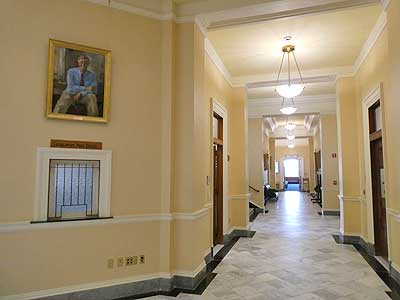
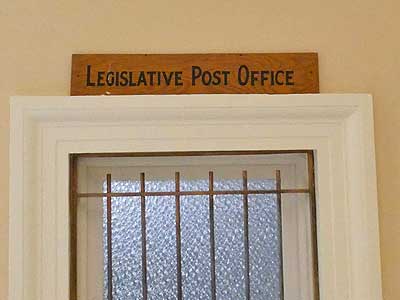
The House of Representatives opened in 1911 in the north wing.
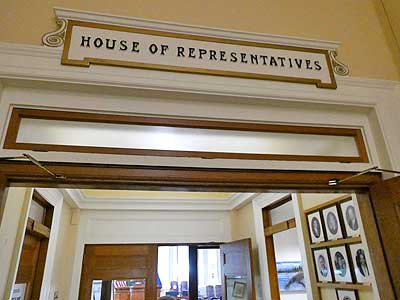
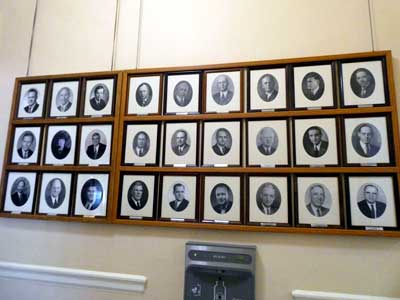
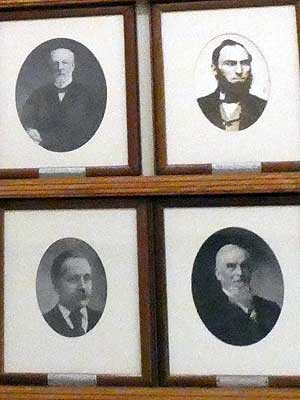
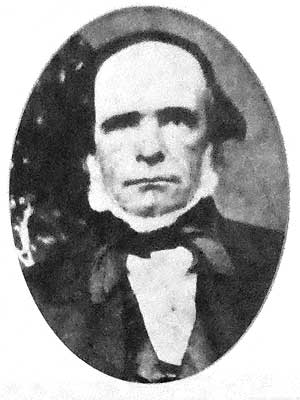
Past representatives
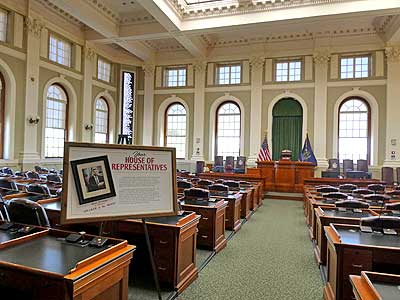
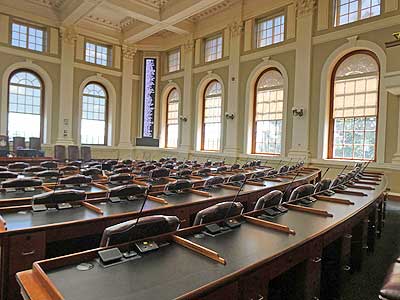
There are 151 members and 3 non-voting Tribal Representatives (elected by their tribes... the Penobscot Nation, Passamaquoddy Nation and the Houlton Band of Maliseet). While they can't vote, they are allowed to introduce bills.
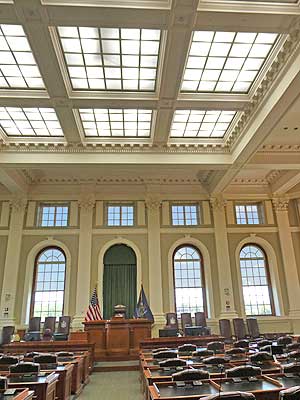
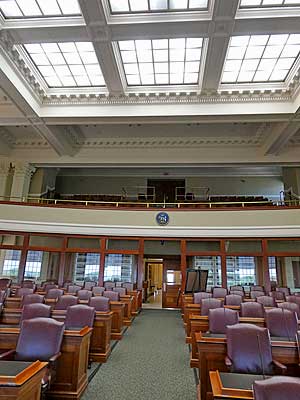
It is two stories in height. The windows are not made of stained glass windows so they let in lots of light.
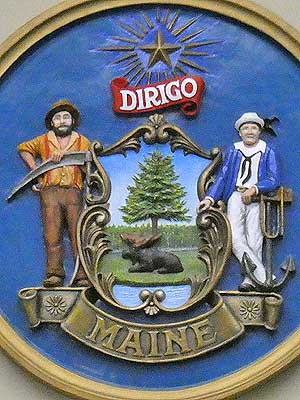
The state seal
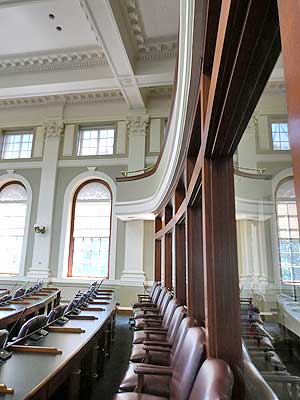
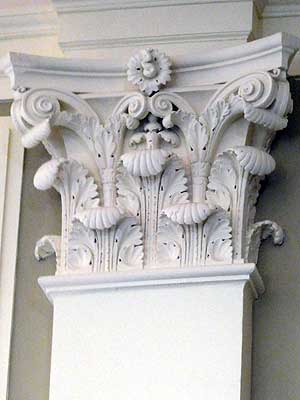
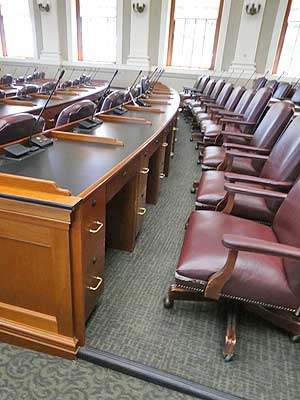
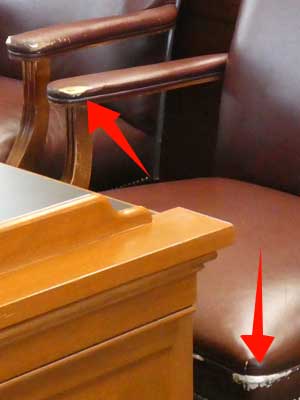
The chairs don't actually fit under the desks, causing the arms and corners to eventually be rubbed off.
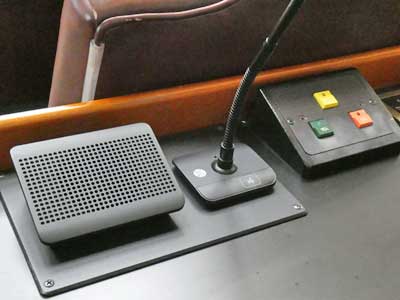
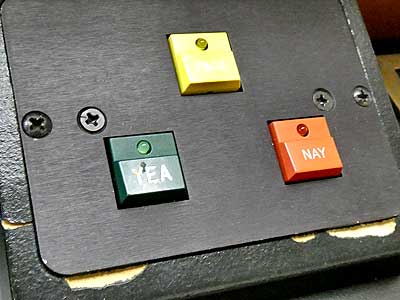
In the corners of the room are tall electronic voting boards. Members push a button on their desks which then lights up their vote on the board. green = yea/yes, red = nay/no
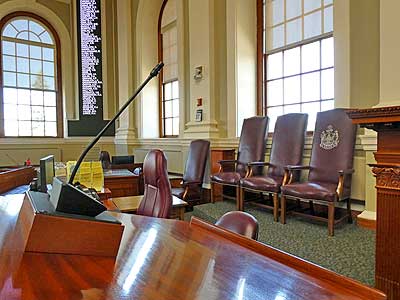
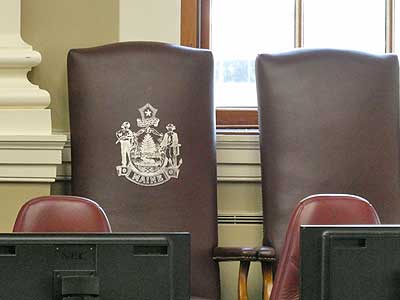
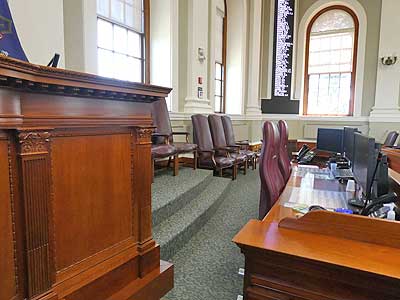
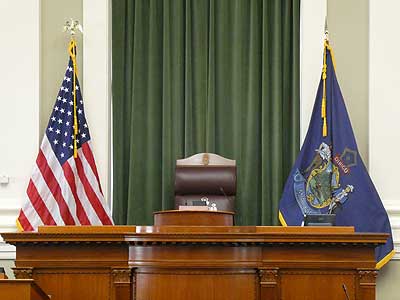
Back in the hallway were more portraits....
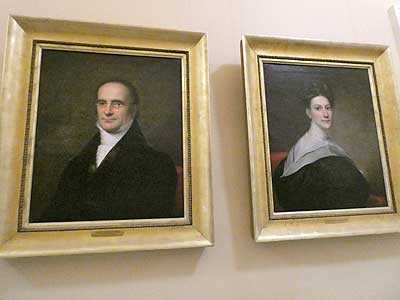
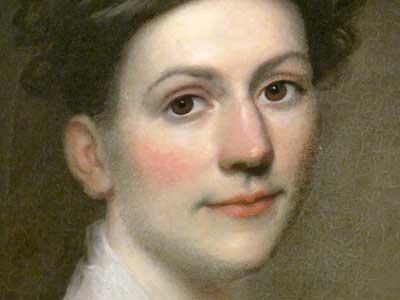
Tenth Governor Samuel Emerson Smith (1788 - 1860) and his wife Louisa Sophia Fuller Smith (1808 - 1884). He was governor in 1831, during the time when the capitol was moved from Portland to Augusta.
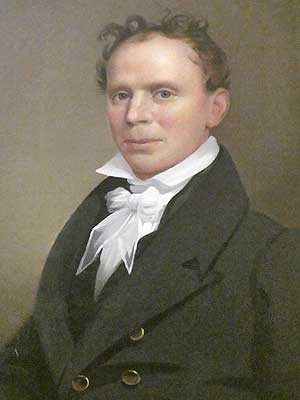
Enoch Lincoln (whom we learned about outside at the tomb)
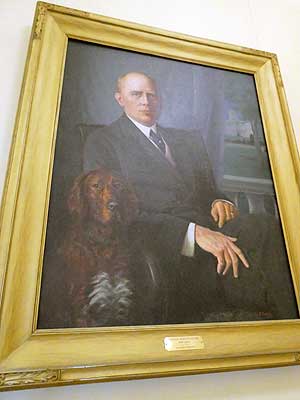
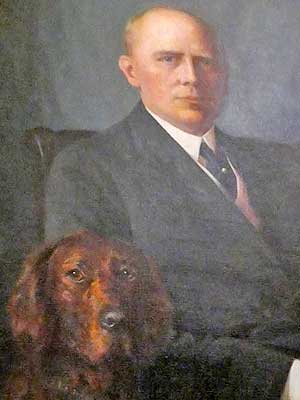
Percival Proctor Baxter with Garry. Baxter was also for animal protection laws.
return • continue

